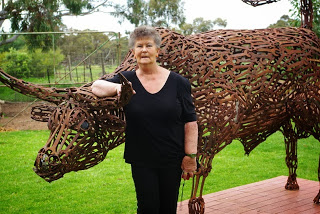
“Without protection of cows, brahminical culture cannot be maintained; and without brahminical culture, the aim of life cannot be fulfilled.”Srimad Bhagavatam 8.24.5
The discussion of whether devotees should use industrial milk currently has 3 schools of thought.
1. Use it and ok if it is offered .
Advantages: Fulfills Srila Prabhupada’s (ACBSP) instruction use milk to develop finer brain tissues
Fulfills ACBSP’s instruction to use milk to lure meat eaters to prasadam
Scaleable as what is needed can be purchased as needed
Cheap and abundant
Cow unknowingly benefits from having milk offered to Krsna
Disadvantages: Requires animal slaughter to subsidize cheap price
Cows lives shortened unnaturally and generally raised in poor unnatural conditions
Lose credibility with animal rightists and situational vegans
Creates complacency in not following ACBSP’s instruction to get from protected cows
2. Become a vegan
Advantages: Not implicated in animal slaughter or suffering
Credibility with animal rightists and situational vegans (preaching to Westerners programs double size when menu shifts to vegan)
Disadvantages: Most devotees can’t/won’t perform the austerity
Doesn’t fulfill ACBSP’s instructions to use milk
Creates complacency in not following ACBSP’s instruction to get from protected cows
3. Drink milk only from protected cows
Advantages: Fulfills ACBSP’s ideal
Credibility with animal rightists and vegans
Cows live full life naturally and reciprocate loving relationship with devotees
Better quality safer milk
Major step towards varnashram
Disadvantages: Benefit (milk) short term but obligations (care for cows up to 20 years) long term
Capital intensive – up to 6 times more expensive than industrial milk
Requires dedicated milker(s)
Requires 20+ year commitment to calves born
Requires enforcement mechanism so money collected now is there for cow’s old age
Not easily scaleable – good for small groups not peak events or increasing numbers
Complex logistics to supply devotee and well wishers diaspora
Requires oxen program to be true cow protection
A fourth alternative has been discussed, Milk Offsets. It is based on the widely accepted concept of Carbon Offsets which is applied a couple of ways. One is when renewable energizes are produced they are given credits that utilities purchase to fulfill state law mandates that they produce a % of their energy from renewables. They are also offered to individuals paying their electric bill to pay a premium over what they owe and the extra used to buy renewable energy credits offsetting their individual usage.
4. Milk Offsets
Advantages: Anyone anywhere can do it requires no authorization
Use of industrial milk and its disadvantages offset by donation to cow protection program
Donation is used by programs to expand cow protection
Milk is used and a cow is protected
Scaleable as Krishna Consciousness spreads and for peak events
Concept accessible to animal rightists and vegans who tend to be environmentalists
Disadvantages: Cows still suffer
Requires financial sacrifice
Not understood by persons unfamiliar with current environmental practices
References:
Carbon offsets
Srila Prabhupada on why devotees should protect cows
European GBC discussion of the milk






